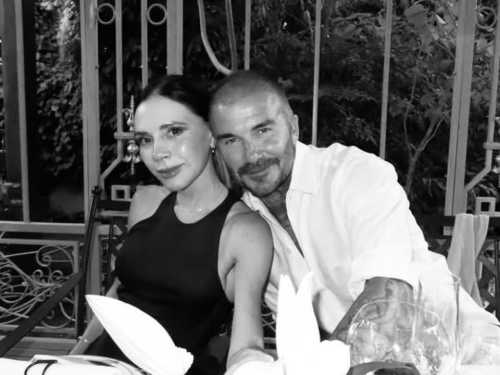
Late one night last October, I was practicing what I like to call
anti-self-care—lying under the covers, scrolling compulsively on my
phone, and vaguely hoping that someone would leap through the screen and
club me on the forehead—when I came across the Gravity Blanket Kickstarter, which had launched the previous April. Gravity was the brainchild of a
handful of guys mostly in their twenties who sought to create sleek, plush
weighted blankets, in three gradations of heaviness: fifteen, twenty, or
twenty-five-pounds. “Seventy per cent of Americans have trouble falling
asleep at least one night a week,” the company’s founder, John
Fiorentino, said in the promo video. “Forty million Americans suffer
from prolonged anxiety.” The Gravity Blanket promised to increase
serotonin and melatonin levels, decrease cortisol (the so-called stress
hormone), and put
you in a deeper sleep. The company’s original fund-raising goal had been $21,500. Its campaign brought in a hundred and fifty thousand dollars
on the first day, and then Gravity started buying paid advertising;
within two weeks, the total had surpassed two million dollars. The
campaign closed in May, with $4,729,263.
“What’s wrong with everyone,” I muttered to myself, after catching up on
this entrepreneurial success story. I closed the window, sent a few
dozen texts, ruined some brain cells on Twitter, clicked through several
articles on the latest mass shooting, took a melatonin even though it
was already two-thirty, and then fought the effects of the melatonin by
reading a bunch of urgently depressing long articles until my body
finally revolted by collapsing into sleep.
Several weeks later, a tiresome encounter at the doctor’s office drove me to start cleaning up my habits. I deleted Twitter from my phone, cut back on coffee, and restricted myself
to reading books before bed. I felt better, but I didn’t feel great. On
its Facebook page, Gravity posted a video showing, on one side, a person
restlessly freaking out in bed under a comforter (i.e., me since
childhood), and, on the other, a perfect sleeper under a Gravity Blanket
(the person I could be). Weighted blankets and vests have been used for
decades as therapeutic aids for children with developmental disorders,
and as tools for calming anxious dogs and cats. In 1999, an occupational therapist named Dr. Tina Champagne began giving
weighted blankets to adults in acute mental-health treatment: it was a
“grounding technique,” she wrote in a presentation,
which facilitated “engagement in the act of nurturing one’s self.” It
struck me as not coincidental that Gravity’s Kickstarter success arrived
deep into a period when many Americans were beginning their e-mails with
reflexive, panicked condolences about the news.
In January, I finally wrote to the company, asking if I could borrow a
prototype. (Gravity Blankets currently sell for two hundred and
twenty-nine dollars; they were cheaper for Kickstarter contributors, and
the company has just recently caught up on its backlog of initial
orders.) They sent me a free twenty-pounder, which arrived in a heavy
cardboard box. I lay down on the couch in expectant ecstasy. “Cover me!”
I shrieked at my boyfriend, who has no social-media accounts and falls
asleep every night in nine seconds. He threw twenty pounds of blanket on
top of me. I couldn’t move or see anything, which felt wonderful. That
night I slept so deeply that I woke up unnerved.
There are some studies on the scientific workings of weighted blankets,
although a few of them were funded by companies that produce weighted
blankets. The Swedish company Somna AB underwrote a 2015 paper in the
Journal of Sleep Medicine & Disorders, which found that consistent and
evenly distributed sensory pressure “can reduce physiological levels of arousal”—in
this context, a good thing—and that weighted blankets reduced movement
during sleep. A 2006 study, co-written by Dr. Champagne—which used
a sample size of thirty-two, and a “crossover” study design instead of a traditional control group—found that sixty-three per cent of people reported lower anxiety after use.
Early in its Kickstarter run, Gravity was busted by the health and
science news Web site STAT for basing big claims on shaky research:
the company had claimed that the blankets “can be used to treat a
variety of ailments,” including insomnia, P.T.S.D., O.C.D., and A.D.H.D.
Gravity deleted the word “treat,” and then deleted that section
altogether. (Kickstarter told STAT that “it asked the Gravity team to change the language because it wasn’t in line with their rules on health claims.”) Its site now features testimonials from customers who are
“kind of addicted” and who compare the blanket to “Advil PM for your whole
body.” In the slightly disturbing sleep diary I kept during my first
week with the blanket, I wrote, “I am still working but bed will be nice
later. Maybe the worst thing is being conscious at all.”
At the end of January, I talked to Mike Grillo, the managing director at
Gravity, who told me how the company had come together. His colleagues
were looking for a product to develop in the “wellness space,” he
said—either a functional product they could make more stylish, or a
stylish product they could make more functional. “With weighted
blankets, everything on the market was very clinical-looking,” he told
me. “They were plain, there was no duvet covering.” (The Gravity Blanket
includes a zippered cover in a breathable blue-gray micro-plush.) They
were surprised by the enormous response to the Kickstarter, but notshocked: meditation apps and sleekly marketed sleep-themed
companies—Parachute bedding, Casper mattresses—have been very successful
recently. Grillo mentioned the online therapy company Talkspace. “I think it’s very interesting
how mental health has become a much more open dialogue in the market,”
he said.
“You guys couldn’t have picked a better time to start selling adult
security blankets,” I said.
“It’s been a stressful year,” Grillo acknowledged. “It’s been a wild
one. We do believe that Gravity could be a part of the way people relax
and fall asleep at night, given all that’s going on in the world.”
The company is planning to unveil some new sleep-related items this
spring, including a melatonin spray and a weighted sleep mask. (“The
first iteration was two pounds, which was absolutely ridiculous. But at
three-quarters of a pound there’s really something there,” Grillo said.)
They’re also adding more colors, as well as a faux-fur option. There are
cheaper weighted blankets available—the market seems to have expanded
quite a bit in the months following Gravity’s Kickstarter. (On a recent weekday, the top two new releases in Amazon’s blanket section were weighted blankets from companies other than Gravity. Gravity doesn’t sell its products on Amazon, but there are plenty of products with names like “Weighted Blanket Gravity Blanket for Adults.” It seems possible that the company’s name will become the generic term for the category, in large part because “Gravity Blanket” has a catchy and definitive ring. It sounds like the name of a person who might be nice to you at Burning Man.
As for me, I have been spending every night under a well-designed
beanbag that’s one-sixth of my body weight, marvelling at capitalism’s
ability to create a void and then to fill it, for those who have the
cash. A couple of nights ago, my boyfriend, whom I had been accidentally
slugging with spare heavy corners—the blanket is only big enough for
personal use—helpfully suggested that I put the Gravity Blanket under the sheets and not on top of them. Even better. The blanket enacts a
fantasy of immobilization that is especially seductive in a world of
ever-expanding obligations—to work, to monetize, to take action, to
perform. Last weekend, a friend came over and tried out the blanket.
“That’s really good,” he said, eyes closed, unmoving. “I kind of want
more. I kind of want to not be able to move at all.”
Sourse: newyorker.com






